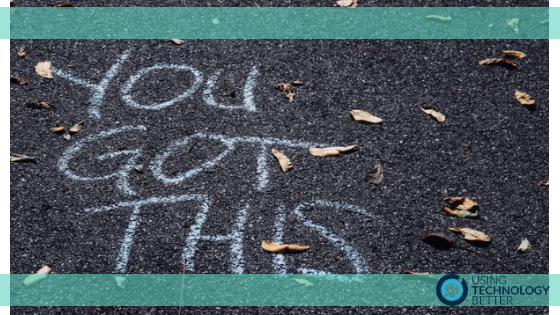Know what you don’t know
In education it seems change is the only constant. Schools are rapidly integrating new ways of teaching and learning in order to make the most of new technologies and innovative ideas. It is difficult for school leaders and teachers to stay perfectly in tune with best practice and emerging trends. As several teachers have told me this week, ‘We just don’t know what we don’t know!’.
We want nothing more than to integrate digital technologies, STEAM and e-learning in meaningful, student focused ways but how do we know where to start? In our busy day, what should be our focus?
In New Zealand, educators have the challenge of integrating the new Digital Technologies curriculum by 2020 and 1000’s of schools are working closely with facilitators and consultants to kick things off in their school. However, simply getting an external provider into your school is not going to instantly focus your digital technologies integration. There are a number of things we can do to ensure that any change is meaningful, student focused and sustainable.
How can you make the most of the support offered?
[bctt tweet=”How can you take control of the integration of technology? #utbpd” username=”mrtThatch”]
Stick to your values!
Your schools values are your anchor. In the ebbs and flows of change your values and vision will always hold you fast. Before any new ideas are introduced revisit and redefine your vision and values. Also, use these as your lens from which you will consider any proposals. Ensure any inquiry or question is phrased in the language of your values. For example, if one of your values was resilience, instead of asking “How do we use Micro:bits?”, Ask “How can Micro:bits help our students become resilient?” By simply rephrasing your questions, every new skill or product will take on meaning and purpose.
- Define your values.
- Regularly revisit them.
- Ask meaningful questions through the lense of your values.
[bctt tweet=”Your schools values are your anchor. In the ebbs and flows of change your values and vision will hold you fast.” username=”mrtThatch”]
Tell your story!
Change is cumulative and any new idea is a potential new chapter in your school’s story. When seeking external support, ensure you tell your story so that facilitators can help you turn the page in a meaningful way. Describe your community and their needs and also tell us where you have already been. What have you already tried? What are your strengths? What is your graduate profile? Telling your story will add depth and insight to your values and help define potential catalysts for the integration of new technologies.
- Identify your schools strengths.
- Add meaning and depth to your schools identity.
[bctt tweet=”Before implementing the support of external consultants ensure they know your schools story. Get on the same page so that the next chapter makes sense. #utbpd” username=”mrtThatch”]
Hug the elephant!
Time is precious and it is helpful to identify the elephant in the room as quickly as possible so that you can begin addressing it. There are a few self assessment tools that can help you do this so that any support you receive can be targeted. With any of these tools, it is important to first recognise and celebrate your strengths then approach the elephant in the room with a positive, empowering approach. To help you with the integration of Digital Technologies use the Te Tokorima-a-Mahuika Digital Readiness, self review tool. By working through this tool you gain rich data which can focus your energies. The great thing about this tool is that it recognises teacher mindset as well as prior knowledge.
The other tool which is highly underutilised is the e-Learning planning framework . This great tool offers fantastic insight into your school and the conversations it prompts are leadership gold. At Using Technology Better we use the GROW coaching model to ensure any change is purposeful and we support schools to actively address their focus areas.
- Use a self review tool to pinpoint focus areas.
- Purposefully address the focus areas.
- Use a coaching model to help drive change.
[bctt tweet=”Want to know what you don’t know about digital technologies and e-learning? Use a self assessment tool such as Te Tokorima-a-Mahuika to get you started #utbpd ” username=”mrtThatch”]
Paint a big picture
My favourite principle of the New Zealand curriculum is ‘Coherence’ and it is a crucial one when integrating new technologies. This is all about ensuring that there is consistency across classrooms and that students transition through the year levels while making progress. We often begin change with a large vision then break off into smaller focus groups or silo’s of action. While this makes perfect sense, it is absolutely crucial that teams map the changes across the school and tie everything back to a coherent plan for students and their vision.
Nominate a teacher who has the ability to see trends and does not get bogged down by details to maintain a grasp on the big picture. Many schools in New Zealand are part of a Community of Learning and this is also offers a fantastic opportunity to map out the progression and experiences a student will have.
[bctt tweet=”The Coherence principle of the NZ curriculum is the key to successful Digital Technologies integration #nzcurriculum #utbpd” username=”mrtThatch”]
- Maintain coherence.
- Map student progress and experiences across year levels.
- Have regular huddles so teams can check in so you can monitor the level of coherence.
- Nominate a leader whose job is to simply stay connected with research and observe changes objectively. This leader can also help focus external support into the right areas.
Use the strategies above to take control of change and integrate new technologies and ideas with purpose and precision. Join our online professional learning community and work with others to know what you don’t know.













